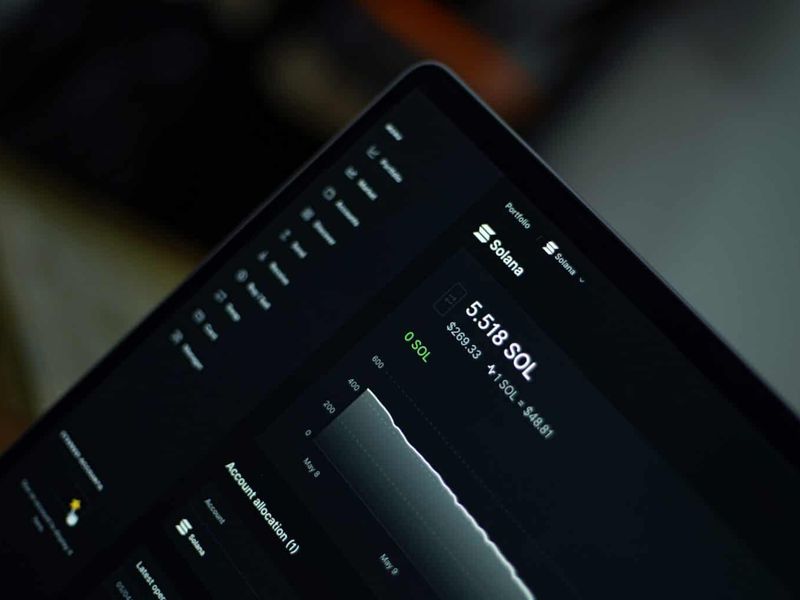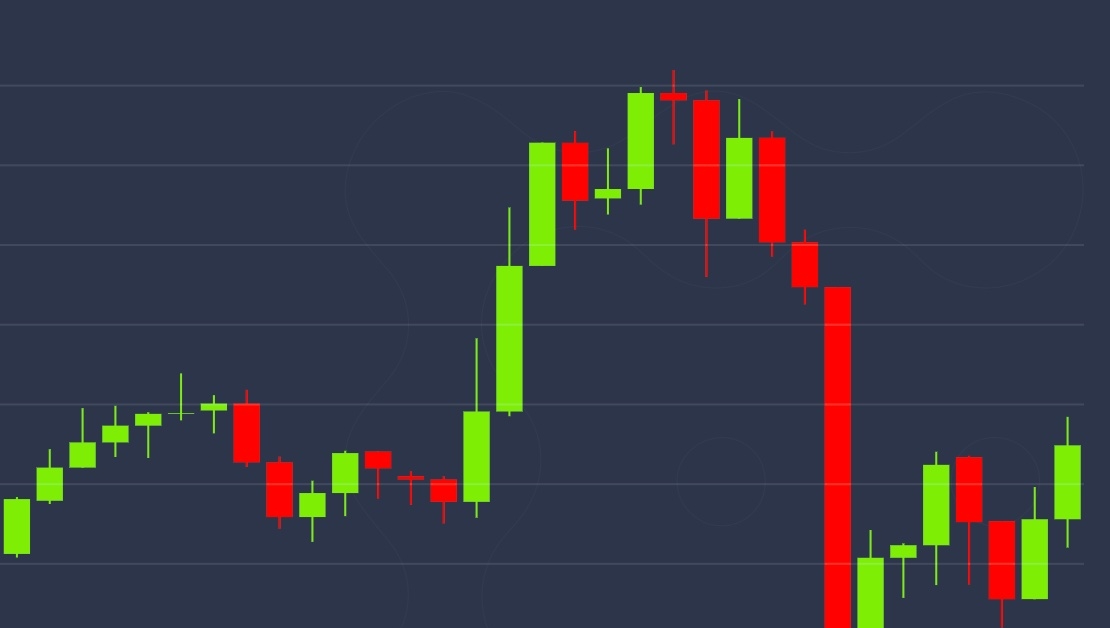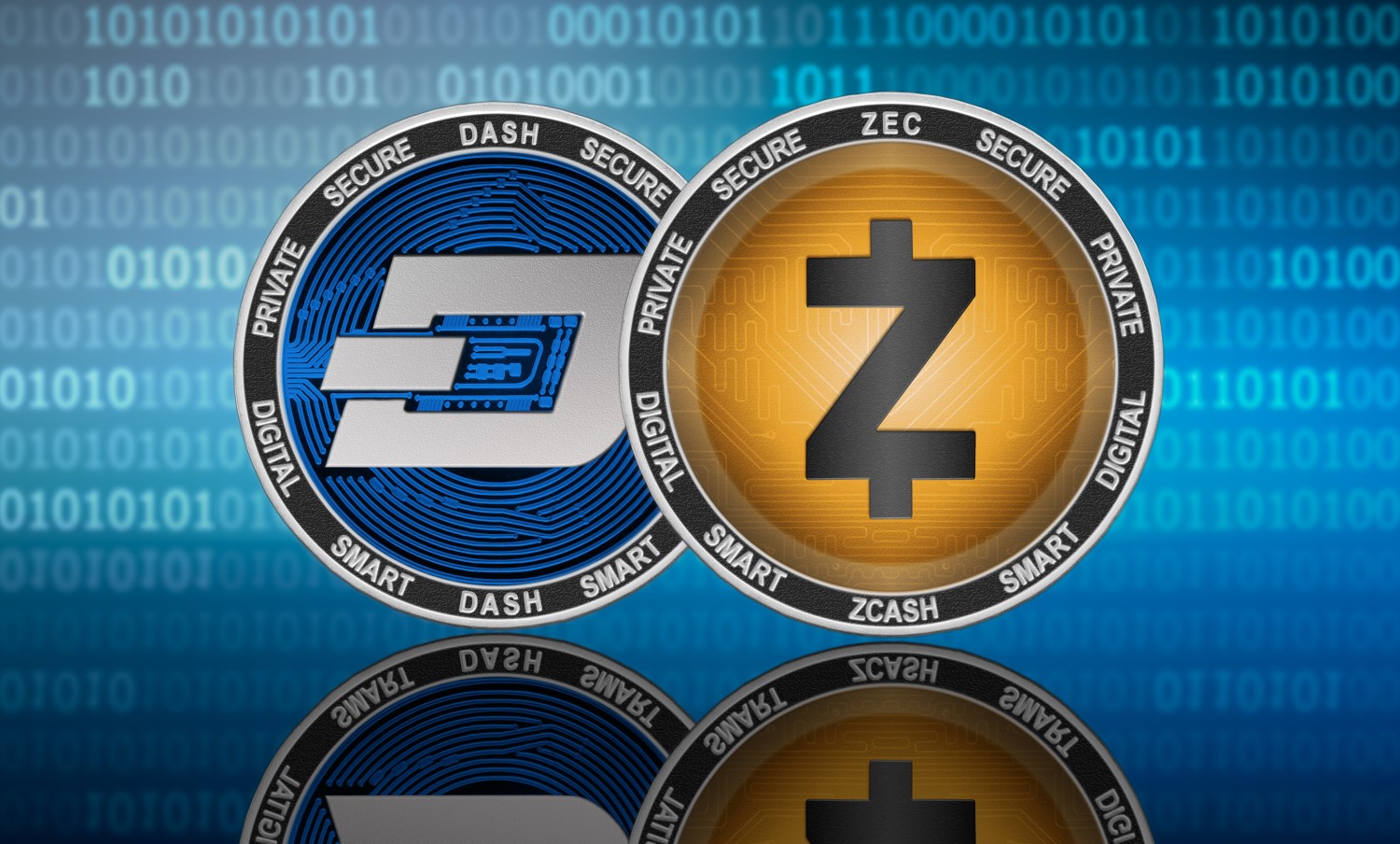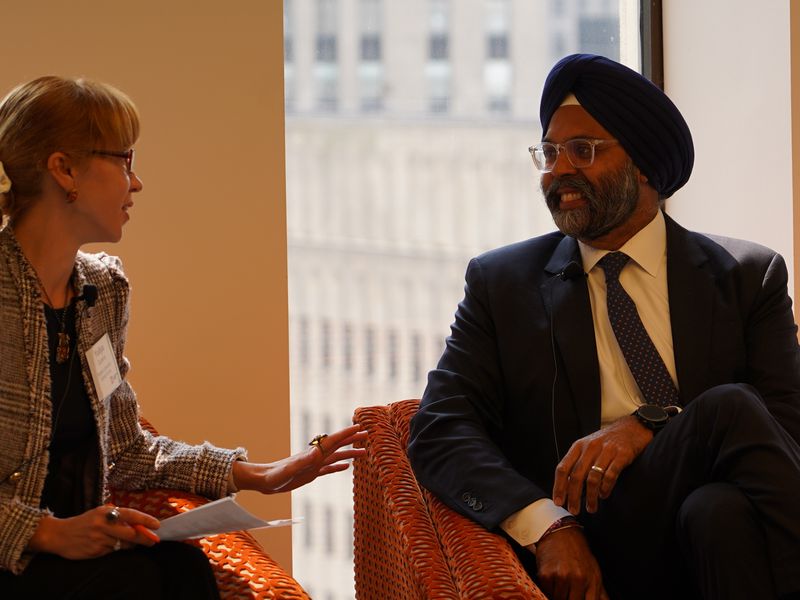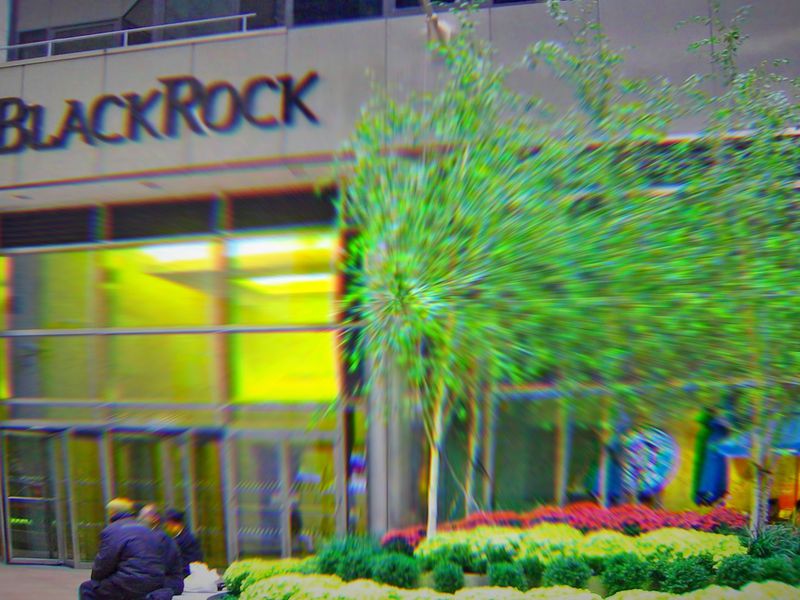Tokenize Everything: Institutions Bet That Crypto’s Future Lies in the Real World
Think of the biggest knocks on crypto: Cryptocurrencies like bitcoin aren’t “real,” because they’re not backed by hard assets in the real world; They’re highly speculative, and the yo-yoing prices can doom unsophisticated investors; often they’re even ridiculous, with meme-coins and cartoon apes selling for millions.
You don’t have to agree with these critiques. (I don’t, at least not fully.) But the merits of these arguments are irrelevant. Like it or not, these are some of the reasons that most banks, financial institutions, governments, and billions of “normies” have still not bought a lick of crypto.
But what if the next generation of crypto is not made of “magic internet money” that non-nerds had never heard of, but the cryptographic “tokenization” of stocks, bonds, cars, and real-life things that people actually care about?
And people – including the suits on Wall Street – are starting to care about the tokenization of real world assets, or RWAs, which has quietly surged during crypto winter. Tokenization lets you “create liquidity for things that aren’t liquid today,” says Lucas Vogelsang, CEO and co-founder of Centrifuge, which has tokenized over $400 million of RWAs.
Whereas most cryptocurrency is an entirely new breed of asset — from bitcoin to eth to dogecoin – tokenization takes assets from the “real” world and puts them on-chain, marrying the perks of blockchain with assets from the real world.
That tokenized “stuff” can be almost anything. Artwork, real-estate, luxury items, wine bottles, cars, carbon credits, and financial instruments like T-bills and stocks — they can all go on-chain. “We’re trying to get everything to tokens, then we’re going to try to see if we can wipe out all the costs from the underlying systems,” says Allan Pedersen, CEO of the Monetalis group, which has worked to tokenize RWAs and use them as collateral on MakerDAO. Pedersen says they have tokenized $1.2 billion in treasury bills that are now used by Maker as collateral.
Even intellectual property can be tokenized. Let’s start with a hypothetical. “Think of someone running a YouTube channel, who makes how-to videos about cooking,” says Sid Powell, CEO and co-founder of Maple, which tokenizes assets and then turns them into collateral. Now imagine that this YouTube cook, who’s funny and charismatic, has grown a large audience. She earns $50,000 per month from YouTube ad revenue.
The creator could tokenize that copyright and sell it to a financier. “We buy the token copyright off them. We own the rights to all the royalty streams from their YouTube cooking videos,” explains Powell. If the annual royalties are valued at $600k, the financier could buy at $550k (allowing some built-in yield), which gives the chef a loan against these future earnings.
This type of model exists in the world of larger music companies and private equity, says Powell, but it’s not accessible to the smaller players. Tokenization makes these tools more inclusive. “Tokenization has the potential to democratize access to capital markets for borrowers,” says Morgan Krupetsky, Director of Business Development for Institutions and Capital Markets at Ava Labs. “Smaller deal sizes and lower investment minimums are made economically viable.”
Tokenization lets you create liquidity for things that aren’t liquid today
Even the more ho-hum business projects like “shipping grain” could benefit from tokenization. Another hypothetical: A shipper wants to send grain across the ocean. Typically the shipper would get financing from a bank. They would collateralize the loan with the grain. “That’s something that’s well-suited to come on-chain, because it involves cross-border finance,” says Powell. He views the current system as analogous to Blockbuster Video vs. Netflix. “If I’m Blockbuster and I’m currently in Brazil, and I want to serve a client in Bulgaria, I have to set up a Blockbuster branch in Bulgaria,” says Powell. “If I’m Netflix, the person just has to have an internet connection.”
Back to the grain shipping. Instead of only being able to get loans from banks in Brazil or Bulgaria, the grain-shipper could now, through tokenization, find capital from anywhere on the planet. You’re in the streaming world of Netflix. “It turns the global financial market into a clearing house,” says Powell.
Maybe the average person isn’t concerned about shipping grain. But the suits in finance can do the math, they can imagine the possibilities, and they envision the complete transformation of financial markets. A report from Boston Consulting Group suggests that by 2030, the tokenized RWA market could swell to $16 trillion. That’s an awfully abstract number visualize. So for some perspective on just how big the market can be, consider that the market cap of bitcoin is currently $600 billion. If bitcoin’s market cap were $16 trillion? Each bitcoin would be worth $800,000.
Welcome to the sneaky-lucrative world of RWAs.
Private equity, public upside
Tokenization is not a new tech; it’s just getting new adoption and new love. In an echo of how early adopters tinkered with NFTs years before they burst into the mainstream — think CryptoPunks, Rare Pepes — tokenization has been around since 2017. Now they’re having a moment.
The infrastructure has improved, the onramps are smoother, institutions are token-curious, and surprising economic forces have spurred adoption. “As interest rates have risen, many of the RWA options offer double-digit returns through interest, without the crypto volatility risk,” writes financial adviser Adam Blumberg in a CoinDesk op-ed. “They can make low-risk loans in markets where Traditional Finance can’t or won’t go, and keep the process efficient.”
While FTX and the embarrassments of 2022 still darken the image of crypto, banks and governments have quietly — almost stealthily — dabbled in the tokenization of RWAs. The Monetary Authority of Singapore is now tokenizing bonds; they’re working with DBS Bank and JP Morgan. Gold is being tokenized. Research from Bank of America found that the tokenized market for gold alone surpassed $1 billion, as “tokenized gold provides exposure to physical gold, 24/7 real-time settlement, no management fees and no storage or insurance costs.”
Some tokenization projects don’t even sound all that exciting — like tokenizing t-bills — but Krupetsky says they can slash costs for things like certification, underwriting, asset monitoring, and fund disbursements, as this red tape is “historically and operationally burdensome, manual, and time-intensive.” That’s partly why banks and corporations are intrigued. “Institutions see tokenization as highly promising, and are looking to move more quickly toward investing in tokenized assets, as well as tokenizing their own assets over the next two years,” found a recent report from Ernst and Young, which conducted a survey finding that 57% of institutional investors want exposure to tokenized assets.
What’s so alluring to these TradFi types?
Consider private equity funds. “Blockchain can replace the entire fund,” says Philipp Pieper, co-founder of Swarm, another start-up that tokenizes RWAs. “A smart contract can do the same thing a fund manager would do normally, and would be taking 100 to 200 basis points out of the equation.”
For the more exclusive “closed” private equity funds, tokenization could make the game more fluid. Let’s say a private equity fund, called the Annoyingly Wealthy Group, jointly bought a company. They’re investing in this company for at least five years. When can they sell and book their profits? The Annoyingly Wealthy members might not agree on the timing.
After Year Five, some might want to press their luck and hope the company (that they now own) keeps growing. Some might think the “top is in” (as in the company is now at the peak of its value, so they should sell high). Some might simply want their capital for other things. With tokenization, as Pieper describes it, you could have a “smart-contract based secondary market” for the fund, which gives them a “structured way to fractionally de-risk or increase the risk, depending on what they see.”
To those not in high finance, your eyes might glaze over at the inner-workings of equity funds. And making life cushier for wealthy venture capitalists was not, perhaps, the original vision of Satoshi Nakamoto. Then again, these innovations are appealing to the power players of traditional finance, and these are the very influencers — whether you like it or not — that will be needed for the widespread adoption of blockchain and cryptocurrency.
“We are in some ways dependent on large lenders” to enter the space, says Vogelsang, Centrifuge’s CEO. He says that today’s early adopters of DeFi simply aren’t a large enough population to grow the space to $100 trillion, which is what he sees as its ultimate destiny. “That money will come from pension funds, from banks, from the current companies,” says Vogelsang. “So the big work is to get them comfortable with the technology, and to get them to understand it, so they’ll start using it.”
Even stocks can be tokenized. This at first struck me as strange and even a bit pointless, as the buying and selling of stocks seems pretty easy — and cheap — with zero-commission options that range from Charles Schwab to Robin Hood. But there are benefits beneath the surface.
“You can’t really buy a fraction of Tesla or Amazon or Netflix,” says Bob Ras, co-creator of Sologenic, which tokenizes securities like stocks, ETFs and commodities. “When you tokenize, users can buy a fraction of these stocks.”
Ras acknowledges that with the Robin Hood app, users actually can buy fractional shares of Tesla or Amazon, but he says this is only because Robin Hood bought a motherlode of popular stocks and lets users buy partial chunks from within the app. (Whether users appreciate this distinction only time will tell.)
When you buy or sell a token, the settlement is instant. That matters in trading. In the current financial system, even in the wealthy corners of Wall Street, it still takes two to three days for transactions to fully settle. That has a cost. Banks, hedge funds, and trading desks are eager to deploy their capital as soon as it’s available — tokenization puts their money to work faster.
Tokenization, at times, can even cut out the middleman of the U.S. dollar. It’s common for investors to sell one asset (like Tesla stock) to another (like Wal-Mart stock). To do this, you need to sell your Tesla (for dollars) and buy Wal-Mart (with dollars). Tokenization could do this faster. In a process that Ray calls “cross conversion,” you can swap your Tesla tokens directly for Wal-Mart tokens. Users could find and create their own trading pairs on a decentralized exchange, says Ras, with the invisible hand of the free market bringing Wal-Mart token holders to Tesla token holders, almost like a magnetic force. The kicker? Because you never sold to U.S. dollars, you wouldn’t pay capital gains tax. (It’s possible, of course, that future regulation could close this loophole.)
Maybe tokenizing stocks will just be a novelty. But if it’s truly cheaper and more efficient, and if it eventually scales to become the new normal, the impact could change Wall Street in ways it’s hard to imagine. Stocks could be traded 24/7, like cryptocurrency. Typically the bulk of trading happens between 9:30am and 10:30am EST, and all of Corporate America times its earning reports, communications, and financial decisions (such as dividend buy-backs) to the well-established rhythms of the Monday-to-Friday U.S. stock market. Tokenization — if it goes fully mainstream — could scramble all of the financial markets.
Pieper calls tokenization “Fin Tech 2.0.” As he outlined in a Medium post, he sees tokenization as a natural progression from ETFs (exchange-traded funds), which were created in the early 1990s. ETFs transformed the stock market; tokenization could do the same. ETFs let investors gain exposure into a basket of themed assets, such as an airlines or health care or energy. With tokenization? The portfolio can become “atomized,” letting you create a mix of stocks and cryptocurrencies and other asset classes that haven’t even been invented, “putting users at the heart of financial instrument design.” Tokenization creates liquidity pools, and these pools can earn yield.
You can be forgiven if your Spidey Sense tingles at the phrase “earning yield.” In 2022, it was the very promise of too-good-to-be true yield that led to meltdowns like Celsius. As I wrote back then, then Celsius CEO Alex Mashinsky confidently told crowds that with “much less risk” than banks, Celsius managed to “deliver high single-digit or low double-digit” returns. (It then filed for bankruptcy while New York’s attorney general accused Mashinsky of fraud.)
Or zoom out even further. In 2008, the banks juiced their profits by trading baroque financial packages — that they didn’t fully understand — containing bundled subprime loans. We all know what happened next. The loans were toxic, the banks wobbled, the economy collapsed. So if we create a clever new system of loans and debt with RWAs, are we just repeating history and boosting the odds of a financial crisis?
If the world truly becomes tokenized, Real World Assets, will drop the clunky ‘Real World.’ They’ll just be assets
Vogelsang acknowledges that the tech “could create a lot of dangerous bad products,” but argues that the very nature of these DeFi tools, at their core, enables transparency and makes a collapse less likely. “A lot of the 2008 issue was that people didn’t really know what it [the subprime loan bundle] was,” says Vogelsang. “No one really knew. Retail users didn’t know, and no one really knew.”
Tokenization is transparent. The assets and liabilities are there for all to see. “The details of asset ownership, transfers, and transactions can be recorded on the blockchain, providing a verifiable and auditable history,” says Daniela Barbosa, Executive Director of Hyperledger Foundation. “This transparency both enhances trust and reduces fraud.” So with this transparency, theoretically, it will be easier to spot systemic risk.
The key word here, of course, is theoretically. Plenty of things sound transparent and risk-free in crypto — just ask the investors of Terra.
The trillion-dollar question in all of crypto right now is, “Does the SEC consider it a security?” One of the happy benefits of tokenizing real-world securities is that there’s no ambiguity about, well, whether said token is a security. It is what it says it is. “People have done backflips to avoid being called a security,” says Pieper. “They’ve built in fake utility to make it look like it’s not a security.” For this reason, Swarm (along with many of the other tokenization projects) is — for now — only available to accredited investors.
That said, appealing to “accredited investors,” ultimately, is not the north star of tokenization. Its champions think they can help regular people. Think about small business loans. Private credit is a market that’s illiquid for smaller companies, which gives a leg-up to the corporations. “When Google issues a bond, you can buy and trade that pretty easily,” says Vogelsang. This is one reason they only pay a slight premium above the treasury yield, he says, so maybe 6% at today’s rates. If you’re a small business? Vogelsang says that because there are no liquid markets for that loan, your options are scarce and you’d pay 15%. This means you need to charge your customers more money, giving Google a massive advantage.
“Tokenization really changes things,” says Vogelsang. “You level the playing field.” He acknowledges that we’ll never get to a point where Google and the small business pay the same rate — there’s more risk in lending to a small business than there is to Google — but creating liquidity helps narrow the gap. “This was the motivation for starting Centrifuge,” says Vogelsang.
Maple’s Sid Powell says something similar. He views the tokenization of RWAs as a way to provide true benefits to ordinary people, which could help the space recover from its reputation of speculation and gambling. “A big narrative thread in RWAs is, how can lending on-chain actually touch real-world businesses, and help them grow?”
Maybe the most popular tokenization project is one we take for granted — cash. “Cash is being tokenized. It’s called a stablecoin. That’s a real-world asset that’s being replicated on-chain, and is then becoming tradable,” says Pieper. And Central Bank Digital Currencies (CBDCs), essentially, are tokenized versions of a central bank currency that exist on a distributed ledger. These would “bring down costs and drastically shorten time-frames for cross border transactions and settlements,” says Barbosa.
The tokenization of cash, which has been happening since Tether launched in 2014, could have global consequences. This leads to what Pedersen calls his “big thought.” He first notes that “The world’s money market is a USD-denominated money market,” and that “all of this dollar-denominated collateral sits in “many different places.” Nobody knows the exact size of it. “Nobody has transparency,” says Pedersen, who describes these pools of dollar-denominated collateral as “completely dark,” so when the system fails it “blows up the world every single time.”
If, instead, the U.S. dollar market is collateral that’s put on the blockchain? “You will start having a world money market that is transparent,” says Pedersen. “Central banks will have an understanding of what’s going on,” which would help avoid the next financial disaster.
These perks of tokenization — without the downside risk of crypto price speculation — are why many view their adoption as inevitable. “More and more assets will be tokenized to the point where we’re not delineating between tokenized and non-tokenized assets,” predicts Krupetsky, at Ava Labs. She imagines it will be like how we “no longer distinguish between marketing and digital marketing.” It’s just marketing.
And perhaps if the world truly becomes tokenized, “Real World Assets,” will drop the clunky “Real World.” They’ll just be assets.
Edited by Ben Schiller.
DISCLOSURE
Please note that our
privacy policy,
terms of use,
cookies,
and
do not sell my personal information
has been updated
.
The leader in news and information on cryptocurrency, digital assets and the future of money, CoinDesk is a media outlet that strives for the highest journalistic standards and abides by a
strict set of editorial policies.
CoinDesk is an independent operating subsidiary of
Digital Currency Group,
which invests in
cryptocurrencies
and blockchain
startups.
As part of their compensation, certain CoinDesk employees, including editorial employees, may receive exposure to DCG equity in the form of
stock appreciation rights,
which vest over a multi-year period. CoinDesk journalists are not allowed to purchase stock outright in DCG
.
:format(jpg)/www.coindesk.com/resizer/mNyrmhntnL4J1QKZR3PChK_aoV4=/arc-photo-coindesk/arc2-prod/public/D2Q7FHY6YZFAFFCYGHD3DTK4RU.png)
Jeff Wilser is the author of 7 books including Alexander Hamilton’s Guide to Life, The Book of Joe: The Life, Wit, and (Sometimes Accidental) Wisdom of Joe Biden, and an Amazon Best Book of the Month in both Non-Fiction and Humor.
Learn more about Consensus 2024, CoinDesk’s longest-running and most influential event that brings together all sides of crypto, blockchain and Web3. Head to consensus.coindesk.com to register and buy your pass now.

